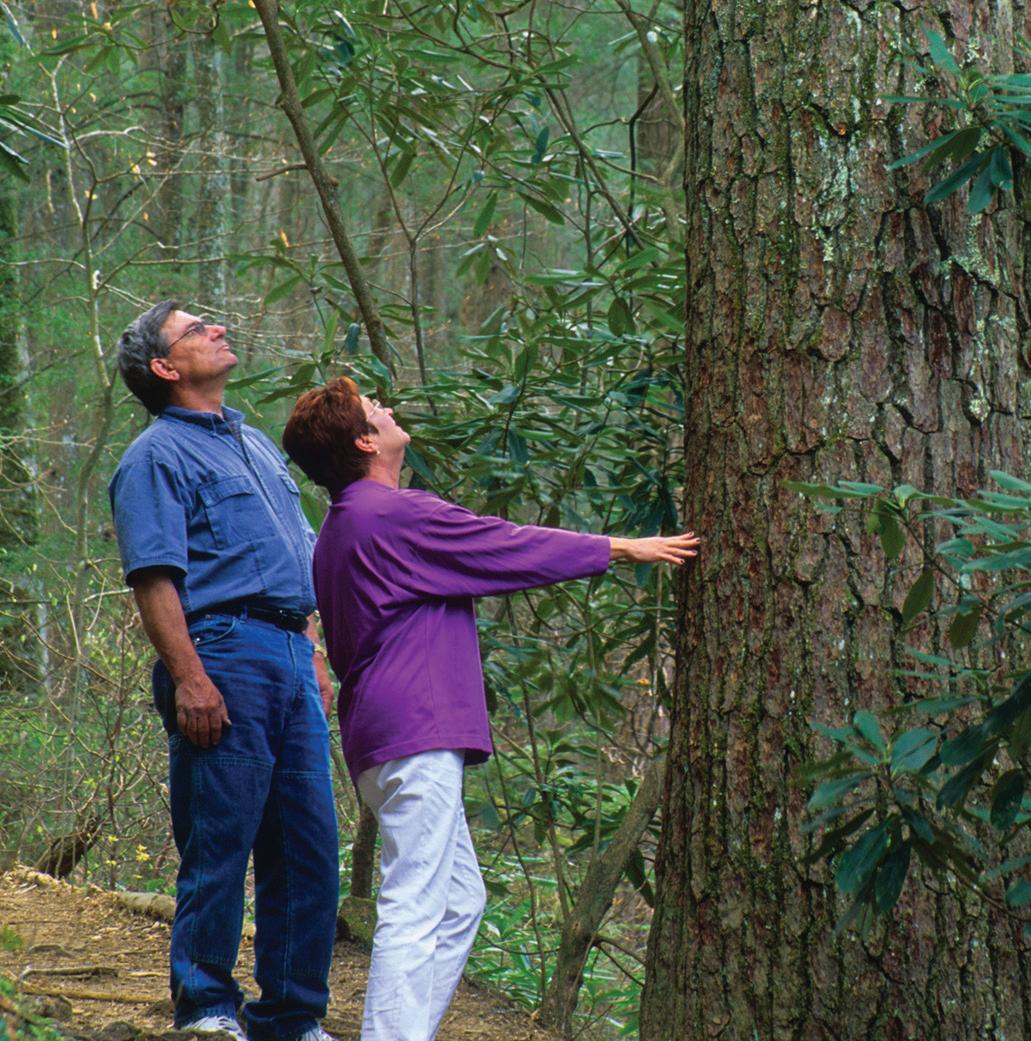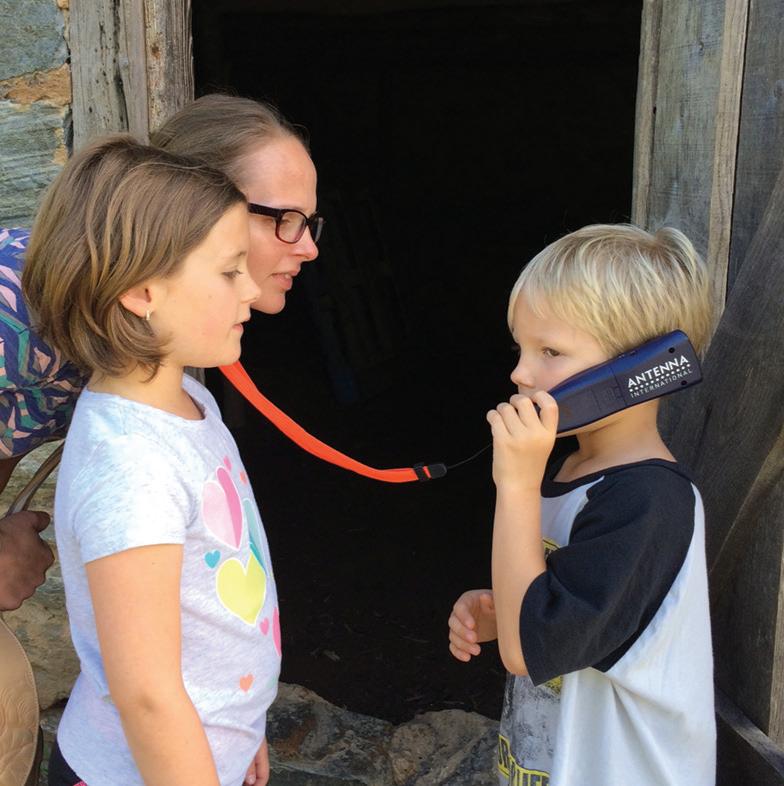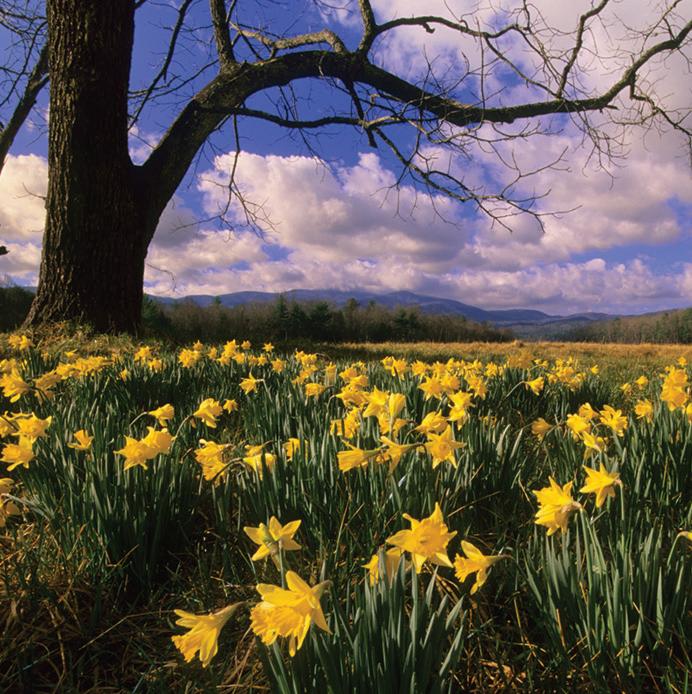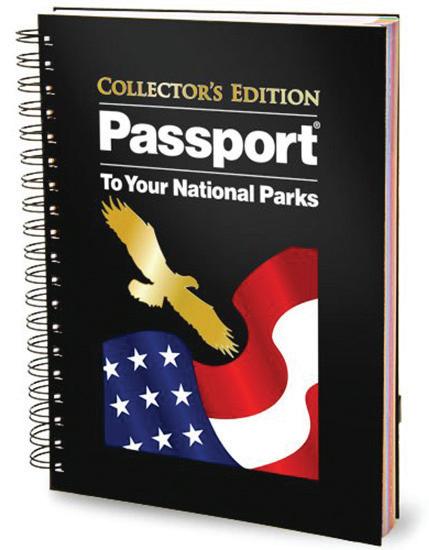
6 minute read
Safety in the Mountains
It is your responsibility to be safe and to know and obey park rules. You can find information and rules at visitor centers, trailhead bulletin boards, and the park website at nps.gov/grsm.
BASIC PACK LIST
• Water, a water filter, tablets, or the ability to boil water • Food and plenty of snacks will sustain you • Extra layers (base layer, jacket, socks) for changing conditions • Sun protection with sunscreen, sunglasses, and/or a hat • Rain gear • Pack cover to keep what you are carrying dry (ziplocs inside your pack can do this too) • Map and compass and the knowledge of how to use them • Shelter in the form of a tent or tarp • Flashlight or headlamp and batteries • Fire starter with a lighter, strike stick, and something to light • Knife or multi-tool for a variety of uses • First aid kit with all the essentials to care for common accidents • Permit for camping overnight (provide itinerary so the NPS knows where to begin looking for you in an emergency)
pring is a great time to get out and explore Great Smoky Mountains National Park. As you plan, it’s important to remember that the season also brings with it some of the most unpredictable weather and rapidly changing conditions of the year.
Be sure to make responsible planning and safety a priority, whether you’re setting out on a day hike, packing for an overnight camping trip or taking in the sights on a drive through the mountains. “You might start out your hike on a clearblue-sky day and end up contending with cold wind, rain, sleet, or snow,” said Backcountry Management Specialist Christine Hoyer. “Even an experienced hiker, park employee, or iPhone can’t predict what Mother Nature has in store.”
After years of experience working in the backcountry and with Appalachian Trail thru-hikers, Hoyer has arrived at a few basics for preventing the worst. “What you carry and what kinds of conditions you prepare for has nothing to do with how far you plan to walk. I pack the same essentials in my backpack no matter what,” said Hoyer. “Quality rain gear and appropriate warm layers are a must—and not just wearing them but carrying extras with you, too.”
Beyond bringing layers, Hoyer urges visitors to pack ample water and food, sources of light and fire, and a reliable means of navigation, since much of the park is without cellular service.
Hikers and motorists should factor wind advisories into their visits, too. As National Weather Service reporting shows, extreme winds are becoming more frequent in the Smokies. This means the risk of injury from motor vehicle accidents and downed trees is only growing—particularly in burn-affected areas and in both high and low elevations.
“During an extended wind event, mountain wave winds can have devastating impacts on lower elevation areas as they make their way down northern, leeward slopes,” said Jim Renfro, the park’s air resource specialist. “That’s where you see more trees coming down in areas like Cades Cove, Sugarland Valley, or Greenbrier Cove.”
From planning ahead to being mindful of emerging wildlife and seasonal hazards, the most important part of any trip in the great outdoors is coming back safely.
“The best thing you can do is have a solid plan and the willingness to adjust your plan if you need to,” said Hoyer. “Take it slow—think before you act.” S
BE MINDFUL OF: • Lightning • High winds • Rapid changes in weather • Emerging wildlife and black bears • Poison ivy and brambles • Slippery logs, rocks, and leaves • Water-crossings (Water can rise quickly, and rocks and logs near water are often very slippery; closely supervise children around all water) • Drones are banned on all National Park Service property, including the Smokies. • Campfires are permitted only within fire rings. Use only firewood purchased from campgrounds; imported wood contains dangerous and invasive pests. Do not leave food or trash in fire rings. • Pets are prohibited on all trails (except Gatlinburg and Oconaluftee River trails) to protect wildlife. Pets may be kept on a leash at all times in campgrounds, picnic areas, and along roads. Service animals that have been individually trained to perform specific tasks for the benefit of persons with disabilities are allowed in all visitor use areas. • Metal detector use is prohibited. • Take only pictures. It is illegal to take any natural features including flowers, seeds, rocks, antlers, or historical artifacts or to disturb soils, rocks, or vegetation. Limited collection of some fish, berries, nuts, and mushrooms is permitted. • Pack out all trash and Leave No Trace to help protect the Smokies.
Historic Grist Mills Two water-powered grist mills operate in the park seven days per week from spring through fall, demonstrating the historic necessity of grinding corn into cornmeal. Cable Mill, located near Cades Cove Visitor Center, halfway around the Cades Cove Loop Road, opens March 7. Mingus Mill, located 2 miles north of Cherokee, NC, near the Mountain Farm Museum, opens April 1. Image of Mingus Mill by Jackie Novak

Junior Rangers Kids 5-12—earn your Great Smoky Mountains National Park Junior Ranger badge today! Just stop by any park visitor center and purchase the Junior Ranger booklet ($2.50) appropriate for your age. Complete the activities described in the booklet and you’re on your way to Junior Ranger glory.

Quiet Walkways These peaceful pathways are scattered around the park offering visitors an opportunity to step outside their vehicles and soak in the Smokies’ lush and intricate beauty. Parking is limited to three or four vehicles to keep the walkways quiet. A few of the trails are short loops, but most are linear trails inviting walkers to go as far as they wish and then return the way they came. Look for the Quiet Walkways signs along many park roads. Image by Bill Lea
The National Park Service and Great Smoky Mountains Association have partnered with Antenna Audio to create a compelling tour of the Mountain Farm Museum at Oconaluftee (2 miles north of Cherokee, NC). You’ll learn how hard-working farm families scratched a living from the steep, rocky soils of the Smoky Mountains and lived a rich and happy life while doing so. Image by GSMA Field to Fork Audio Tour


Self-guiding Tours Want to know a little about the sights you are seeing? Nonprofit park partner Great Smoky Mountains Association has published a series of colorful, inexpensive booklets keyed to numbered posts along park roads. You’ll learn about park history as well as some of the plants and wildlife you’ll encounter along the route. Self-guiding tour booklets are available at park visitor centers as well as dispensers beside the roads. Tours include: Cades Cove driving and walking, Roaring Fork Motor Nature Trail, the Mountain Farm Museum, Newfound Gap Road, Tremont Logging History, and Mingus Mill. Image of Cades Cove (left) by Bill Lea

Passport Stamps Ready to have your official Passport to Your National Parks® stamped? You’ll find free site-specific stampers at all park visitor centers and some campgrounds. If you don’t have one, pick up this collector’s edition book in one of the park’s visitor centers!








